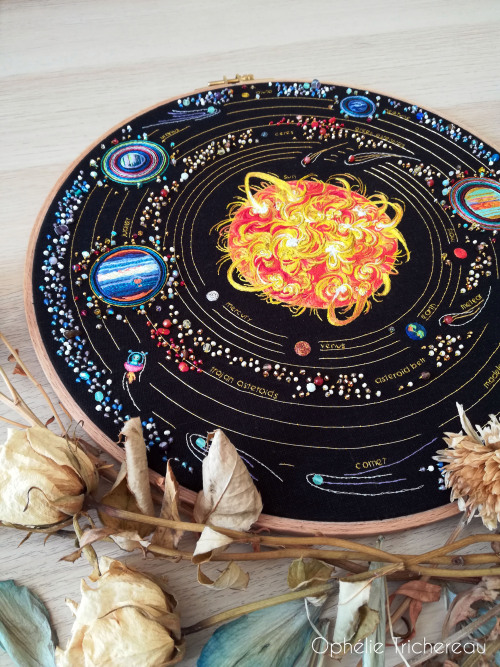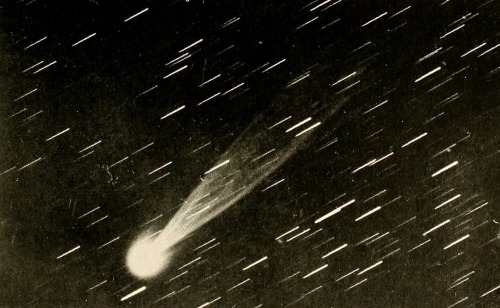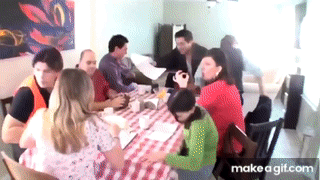Ad-astra-affecte-spe - Reach For The Stars With Hope










More Posts from Ad-astra-affecte-spe and Others



Cosmic Delights and Distant Discoveries Unfold in ‘Astronomy Photographer of the Year 15’
Two spiral galaxies, NGC 6040 and NGC 6039, are merging together at the right side of this Hubble image. NGC 6039 is seen face-on and is circular in shape. NGC 6040 seems to lie in front of the first one. In the lower-left corner, cut off by the frame, the elliptical galaxy NGC 6041 — a central member of the galaxy cluster that Arp 122 resides in — appears as light radiating from a point. The color image was made from separate exposures taken in the visible and infrared regions


Andromeda over the Swiss Alps Image Credit: Dzmitry Kananovich

The monsters that live on the Sun are not like us. They are larger than the Earth and made of gas hotter than in any teapot. They have no eyes, but at times, many tentacles. They float. Usually, they slowly change shape and just fade back onto the Sun over about a month. Sometimes, though, they suddenly explode and unleash energetic particles into the Solar System that can attack the Earth. Pictured is a huge solar prominence imaged almost two weeks ago in the light of hydrogen. Captured by a small telescope in Gilbert, Arizona, USA, the monsteresque plume of gas was held aloft by the ever-present but ever-changing magnetic field near the surface of the Sun. Our active Sun continues to show an unusually high number of prominences, filaments, sunspots, and large active regions as solar maximum approaches in 2025.

Bubble Nebula and the Star Cluster
New pics of Io just dropped

More are over here at NASA's Juno probe site.




A beginner’s star-book, an easy guide to the stars and to the astronomical uses of the opera-glass, the field-glass and the telescope, 1912
NATIVE CARBON DIOXIDE FOUND ON JUPITER’S MOON EUROPA

-
 watery-melon-baller liked this · 1 week ago
watery-melon-baller liked this · 1 week ago -
 tecuu1xxz liked this · 2 weeks ago
tecuu1xxz liked this · 2 weeks ago -
 123i321 reblogged this · 2 weeks ago
123i321 reblogged this · 2 weeks ago -
 123i321 liked this · 2 weeks ago
123i321 liked this · 2 weeks ago -
 kozumejayjay liked this · 2 weeks ago
kozumejayjay liked this · 2 weeks ago -
 firepony67 reblogged this · 2 weeks ago
firepony67 reblogged this · 2 weeks ago -
 thedownloey reblogged this · 2 weeks ago
thedownloey reblogged this · 2 weeks ago -
 thedownloey liked this · 2 weeks ago
thedownloey liked this · 2 weeks ago -
 tootiredtoosadtooangry reblogged this · 2 weeks ago
tootiredtoosadtooangry reblogged this · 2 weeks ago -
 lolacouldnotcareless reblogged this · 2 weeks ago
lolacouldnotcareless reblogged this · 2 weeks ago -
 lolacouldnotcareless liked this · 2 weeks ago
lolacouldnotcareless liked this · 2 weeks ago -
 bro-man-dude-guy liked this · 2 weeks ago
bro-man-dude-guy liked this · 2 weeks ago -
 pinkish-rose reblogged this · 2 weeks ago
pinkish-rose reblogged this · 2 weeks ago -
 dekkiidan liked this · 2 weeks ago
dekkiidan liked this · 2 weeks ago -
 castlevanian reblogged this · 2 weeks ago
castlevanian reblogged this · 2 weeks ago -
 gem-is-still-bored reblogged this · 2 weeks ago
gem-is-still-bored reblogged this · 2 weeks ago -
 vexx-the-egg liked this · 2 weeks ago
vexx-the-egg liked this · 2 weeks ago -
 spoopywhiskers reblogged this · 2 weeks ago
spoopywhiskers reblogged this · 2 weeks ago -
 spoopywhiskers liked this · 2 weeks ago
spoopywhiskers liked this · 2 weeks ago -
 underneath-the-oak-trees reblogged this · 2 weeks ago
underneath-the-oak-trees reblogged this · 2 weeks ago -
 isopod-gender reblogged this · 2 weeks ago
isopod-gender reblogged this · 2 weeks ago -
 isopod-gender liked this · 2 weeks ago
isopod-gender liked this · 2 weeks ago -
 murderofsomeone reblogged this · 2 weeks ago
murderofsomeone reblogged this · 2 weeks ago -
 murderofsomeone liked this · 2 weeks ago
murderofsomeone liked this · 2 weeks ago -
 zeesqueere reblogged this · 2 weeks ago
zeesqueere reblogged this · 2 weeks ago -
 zeesqueere liked this · 2 weeks ago
zeesqueere liked this · 2 weeks ago -
 nerteragranadensis liked this · 2 weeks ago
nerteragranadensis liked this · 2 weeks ago -
 primatechnosynthpop reblogged this · 2 weeks ago
primatechnosynthpop reblogged this · 2 weeks ago -
 primatechnosynthpop liked this · 2 weeks ago
primatechnosynthpop liked this · 2 weeks ago -
 doorfus reblogged this · 2 weeks ago
doorfus reblogged this · 2 weeks ago -
 sleep-cloud liked this · 2 weeks ago
sleep-cloud liked this · 2 weeks ago -
 manicinsomniac reblogged this · 2 weeks ago
manicinsomniac reblogged this · 2 weeks ago -
 ducktummy liked this · 2 weeks ago
ducktummy liked this · 2 weeks ago -
 harpoontoaster liked this · 2 weeks ago
harpoontoaster liked this · 2 weeks ago -
 couscousconsequences reblogged this · 3 weeks ago
couscousconsequences reblogged this · 3 weeks ago -
 grosstoasties liked this · 3 weeks ago
grosstoasties liked this · 3 weeks ago -
 vronthederpywolf liked this · 3 weeks ago
vronthederpywolf liked this · 3 weeks ago -
 patrone-saint reblogged this · 3 weeks ago
patrone-saint reblogged this · 3 weeks ago -
 patrone-saint liked this · 3 weeks ago
patrone-saint liked this · 3 weeks ago -
 mindsofjade reblogged this · 3 weeks ago
mindsofjade reblogged this · 3 weeks ago -
 deerskewl reblogged this · 3 weeks ago
deerskewl reblogged this · 3 weeks ago -
 renofthewoods reblogged this · 3 weeks ago
renofthewoods reblogged this · 3 weeks ago -
 renofthewoods liked this · 3 weeks ago
renofthewoods liked this · 3 weeks ago -
 ambleh liked this · 3 weeks ago
ambleh liked this · 3 weeks ago -
 tabbyfeathers reblogged this · 3 weeks ago
tabbyfeathers reblogged this · 3 weeks ago -
 squeakyfoof reblogged this · 3 weeks ago
squeakyfoof reblogged this · 3 weeks ago -
 doxiedreg reblogged this · 3 weeks ago
doxiedreg reblogged this · 3 weeks ago -
 sodapop-glitch reblogged this · 3 weeks ago
sodapop-glitch reblogged this · 3 weeks ago -
 sodapop-glitch liked this · 3 weeks ago
sodapop-glitch liked this · 3 weeks ago -
 thylacoleocarn liked this · 3 weeks ago
thylacoleocarn liked this · 3 weeks ago

★•Astronomy, Physics, and Aerospace•★ Original and Reblogged Content curated by a NASA Solar System Ambassador
204 posts
